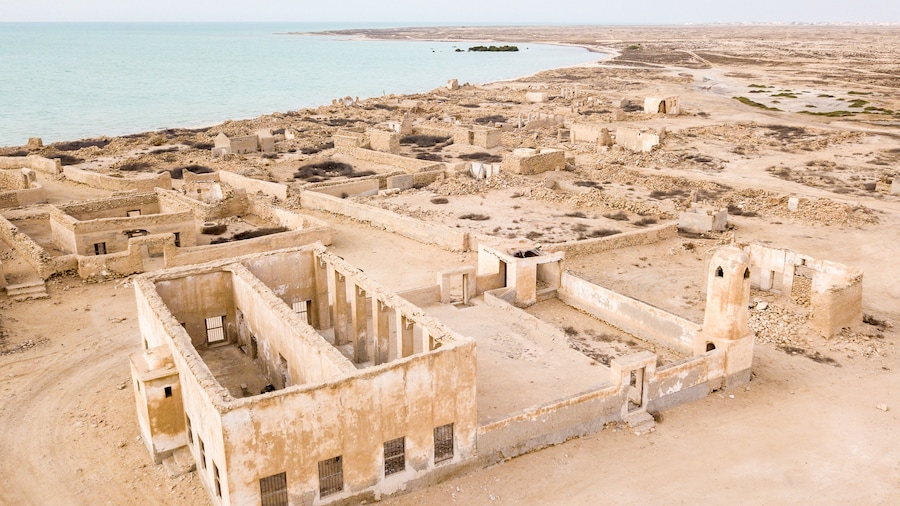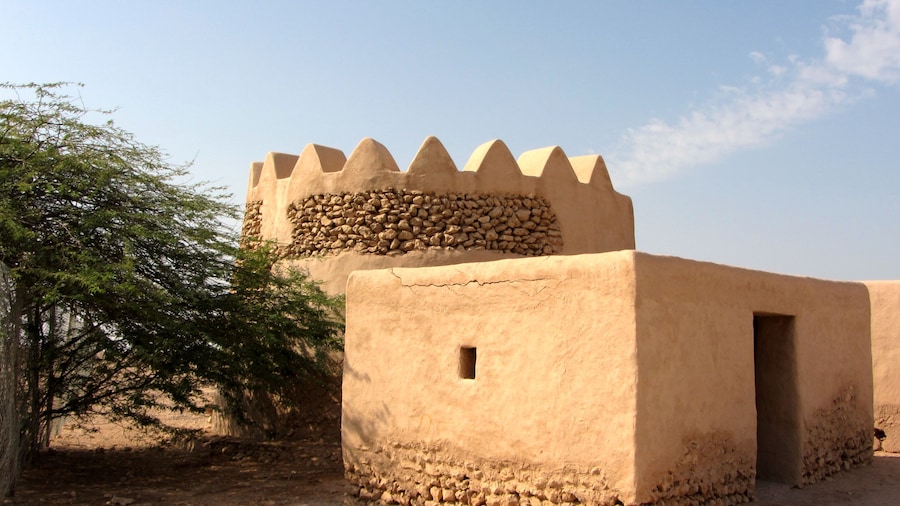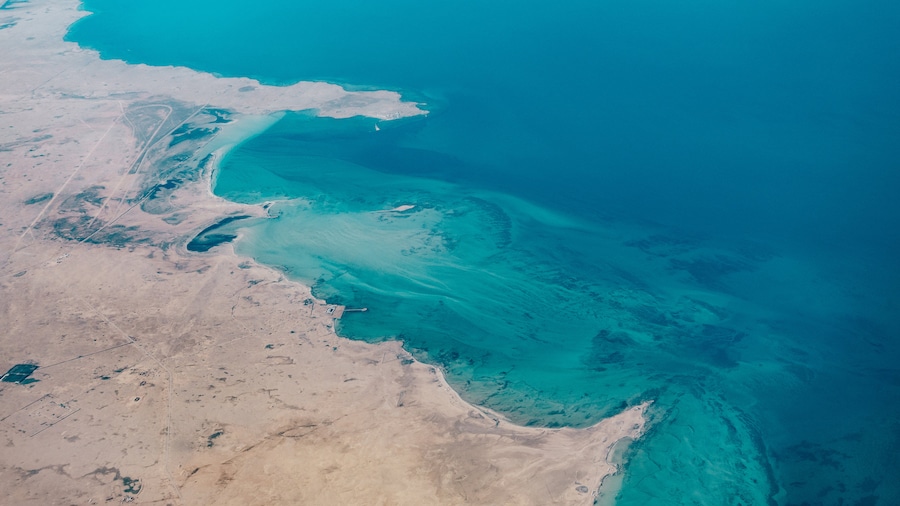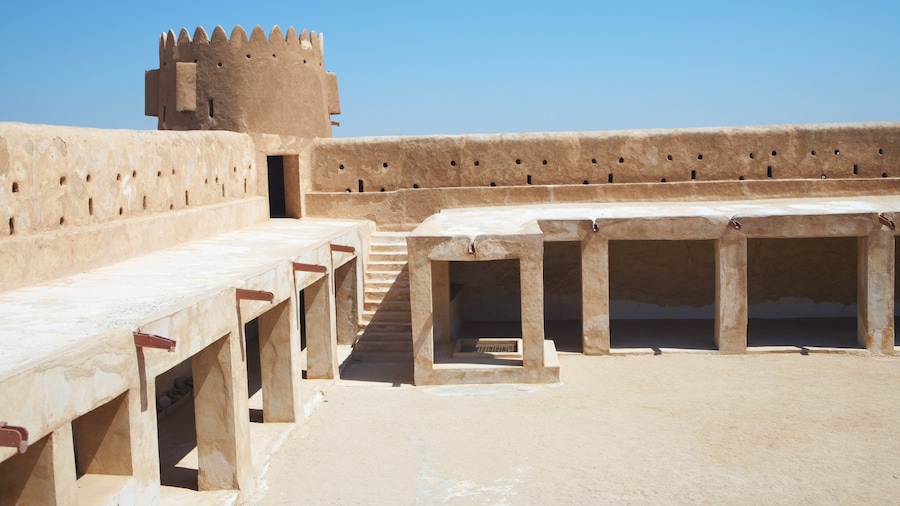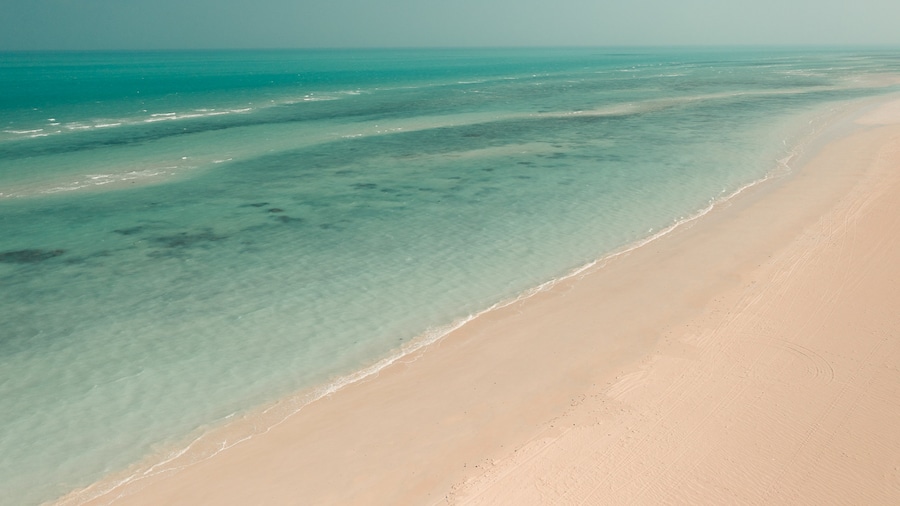One of the largest archaeological sites in Qatar gives you an idea of how locals lived along the northern coast before the 1800s.
Just a few decades ago, the Ruwayda site appeared to be simply mounds in the ground. Today, however, archaeologists using the latest technology have discovered the outlines of artifacts from a major settlement on Qatar’s northwestern coast. Visit Ruwayda to see what has been excavated so far and learn about ongoing plans to unearth and preserve more of this fascinating spot.
Ruwayda appears to have been a fairly large village, 220 acres (90 hectares) in size, stretching 1.5 miles (2.5 kilometers) along the coast. Early historians thought Ottomans occupied the settlement, but archaeologists now believe Ruwayda was built by the Portuguese in the 1500s. Note that the round tower of a large fort facing the ocean suggests the defensive structure was of European design, with the tower capable of supporting a cannon.
Besides the fort, one of the largest discovered in Qatar, the settlement had wells, mosques, warehouses, courtyard homes, tombs and a palace. Objects found here indicate the village had a prominent role in maritime trade. Excavated artifacts include porcelain from Asia, earthenware from Bahrain, ceramics from Europe and mangrove beams from Africa. Gaze out over the shallow bay and imagine trading ships or pirates arriving from distant lands in ancient times.
Learn about the site’s modern archaeology efforts, which are funded by Qatar Foundation. Excavation of Ruwayda began in 2009 with traditional hand tools. More recently, Andrew Petersen of University of Wales Trinity Saint David has begun using high-tech tools to enhance the process. Drone photography and thermal imaging help archaeologists assess what lies beneath the surface and focus on where to dig.
Drive northwest from Doha to Ruwayda near Al Ruwais in less than 2 hours. Renting a four-wheel drive or joining an organized tour is advisable for traveling to the region’s interesting rock formations and other historic sites.
Combine visits to Al Jumail, Al Thaqab Fort, Al Arish and Zekreet Fort to see the latest information being gathered about the past along Qatar’s coastline. Be respectful of archaeological fragility when visiting any of these historic sites. Bring plenty of water for the journey.
